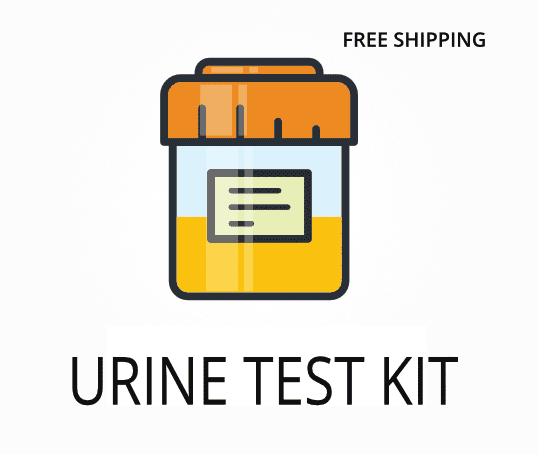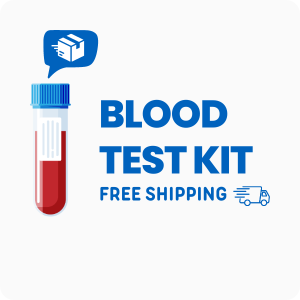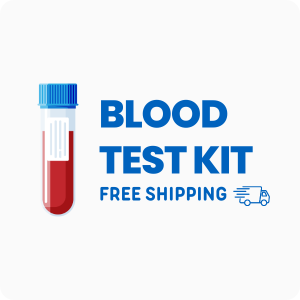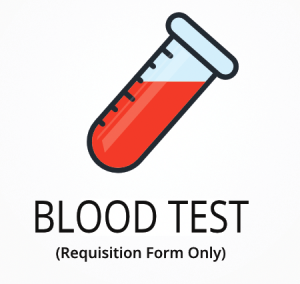Ordering the Comprehensive Urine Elements Profile | Genova
The Comprehensive Urine Elements Profile from Genova helps identify imbalances in toxic metals and nutrient elements by analyzing a urine sample. This test is often used to check for exposure to heavy metals, monitor detoxification, and assess mineral status, which can affect energy, memory, mood, and kidney function. Interestingly, this test can also reveal hidden sources of exposure to metals like arsenic or mercury that may not show up in blood tests.
Ordering this test provides specific benefits:
- Detects exposure to 20 toxic metals, including lead, mercury, and arsenic.
- Measures 15 nutrient elements such as magnesium, zinc, and selenium for a complete mineral profile.
- Assesses kidney function by evaluating creatinine and total urine volume.
- Helps identify causes of symptoms like fatigue, brain fog, or joint pain linked to metal toxicity or mineral imbalance.
- Supports targeted nutrition and detoxification plans based on measurable results.
Who Should Consider Heavy Metal and Mineral Urine Testing
People who have unexplained fatigue, memory problems, or skin issues may benefit from this test, especially if they have a history of environmental or occupational exposure. For example, someone who works in construction and notices new joint pain and trouble concentrating might want to check for heavy metal exposure and mineral imbalances.
Ordering this test may also be helpful in these situations:
- Frequent urinary tract infections with no clear cause
- Persistent muscle weakness or cramps despite normal bloodwork
- Unexplained changes in weight or appetite
- Chronic digestive problems that do not improve with diet changes
- Hair loss in someone who recently moved to a new area with different water sources
Testing for toxic metals and nutrient elements can pinpoint the source of symptoms like low energy, poor concentration, or skin changes, allowing for targeted treatment. Delaying this test could mean missing early signs of metal buildup or mineral depletion, which may become harder to address if not caught promptly.
Preparing for Your Urine Elements and Heavy Metals Analysis
Fasting is not required for this test, but follow the specific collection instructions provided in your kit for the most useful results. Always go by any directions your doctor or healthcare professional gives you to make sure your sample is collected correctly and nothing is missed.
Labs Included When Ordering Your Comprehensive Urine Elements Profile | Genova
| Test Name | Reference Range | Significance | Low and High Levels of Comprehensive Urine Elements Profile | Genova |
|---|---|---|---|
| Aluminum | <7 µg/g creatinine | Aluminum is a metal found in food, water, and some medications. High levels can affect the nervous system and bone health. | High levels mean possible exposure from cookware, water, or antacids.
Low levels mean minimal exposure or efficient elimination. |
| Antimony | <1 µg/g creatinine | Antimony is used in flame retardants and batteries. It can cause lung and heart problems if levels are high. | High levels mean recent exposure to industrial materials.
Low levels mean little or no exposure. |
| Arsenic | <35 µg/g creatinine | Arsenic is found in some foods and water. High levels can cause skin, nerve, and digestive problems. | High levels mean possible exposure from seafood, rice, or contaminated water.
Low levels mean no significant exposure. |
| Barium | <7 µg/g creatinine | Barium is used in medical imaging and some industries. High levels can affect the heart and muscles. | High levels mean exposure from industrial sources or contaminated water.
Low levels mean no recent exposure. |
| Bismuth | <1 µg/g creatinine | Bismuth is found in some stomach medicines. High levels can cause kidney and nervous system issues. | High levels mean overuse of bismuth-containing medications.
Low levels mean no significant exposure. |
| Cadmium | <1 µg/g creatinine | Cadmium is found in batteries and tobacco smoke. High levels can damage kidneys and bones. | High levels mean exposure from smoking or industrial sources.
Low levels mean little or no exposure. |
| Calcium | 100-300 mg/g creatinine | Calcium is important for bones, nerves, and muscles. Urine levels show how much is being lost or retained. | High levels mean possible bone loss or high intake.
Low levels mean low intake or absorption issues. |
| Cesium | <5 µg/g creatinine | Cesium is a rare element found in some foods and the environment. High levels may indicate environmental exposure. | High levels mean environmental or occupational exposure.
Low levels mean no significant exposure. |
| Chromium | <1 µg/g creatinine | Chromium helps with blood sugar control. High levels can be toxic, while low levels may affect metabolism. | High levels mean exposure from supplements or industry.
Low levels mean possible deficiency. |
| Cobalt | <1 µg/g creatinine | Cobalt is part of vitamin B12. High levels can cause heart and thyroid problems. | High levels mean exposure from metal implants or supplements.
Low levels mean no significant exposure. |
| Copper | 15-60 µg/g creatinine | Copper is needed for nerves and immune function. Too much or too little can cause fatigue and weakness. | High levels mean possible copper overload or liver issues.
Low levels mean deficiency or absorption problems. |
| Creatinine | 500-2000 mg/day | Creatinine is a waste product from muscles. It helps check if the urine sample is concentrated enough for testing. | High levels mean concentrated urine or high muscle mass.
Low levels mean diluted urine or low muscle mass. |
| Gadolinium | <0.5 µg/g creatinine | Gadolinium is used in MRI contrast agents. High levels may indicate recent imaging or slow elimination. | High levels mean recent MRI with contrast.
Low levels mean no recent exposure. |
| Gallium | <0.5 µg/g creatinine | Gallium is used in electronics and some medicines. High levels may show environmental or medical exposure. | High levels mean exposure from medical or industrial sources.
Low levels mean no significant exposure. |
| Iron | 10-30 µg/g creatinine | Iron is needed for red blood cells. Urine levels can show loss or overload. | High levels mean possible iron overload or kidney issues.
Low levels mean deficiency or low intake. |
| Lead | <2 µg/g creatinine | Lead is a toxic metal that can affect the brain, kidneys, and nerves. Even small amounts can be harmful. | High levels mean exposure from old paint, pipes, or soil.
Low levels mean no significant exposure. |
| Length of Collection | As instructed | The length of urine collection affects the accuracy of the test. Following instructions ensures the results are meaningful. | High levels mean over-collection may dilute results.
Low levels mean under-collection may miss exposures. |
| Lithium | <0.5 µg/g creatinine | Lithium is used in some medicines. High levels can affect the kidneys and nervous system. | High levels mean medication use or environmental exposure.
Low levels mean no significant exposure. |
| Magnesium | 60-120 mg/g creatinine | Magnesium is needed for muscles and nerves. Urine levels show if the body is losing too much or too little. | High levels mean excess loss or high intake.
Low levels mean deficiency or poor absorption. |
| Manganese | <1 µg/g creatinine | Manganese is needed for bones and metabolism. High levels can be toxic, especially to the brain. | High levels mean exposure from water or industry.
Low levels mean possible deficiency. |
| Mercury | <5 µg/g creatinine | Mercury is found in fish, dental fillings, and some products. High levels can harm nerves and kidneys. | High levels mean exposure from seafood or dental work.
Low levels mean no significant exposure. |
| Molybdenum | <1 µg/g creatinine | Molybdenum helps break down certain amino acids. High levels are rare but can affect metabolism. | High levels mean excess intake or rare metabolic issues.
Low levels mean possible deficiency. |
| Nickel | <2 µg/g creatinine | Nickel is found in coins, jewelry, and some foods. High levels can cause skin and lung problems. | High levels mean exposure from metal objects or food.
Low levels mean no significant exposure. |
| Niobium | <0.5 µg/g creatinine | Niobium is used in steel and electronics. High levels are rare but may indicate industrial exposure. | High levels mean exposure from industrial sources.
Low levels mean no significant exposure. |
| Platinum | <0.5 µg/g creatinine | Platinum is used in jewelry and chemotherapy drugs. High levels may show recent medical or environmental exposure. | High levels mean exposure from medical treatments or jewelry.
Low levels mean no significant exposure. |
| Potassium | 25-125 mmol/g creatinine | Potassium is needed for heart and muscle function. Urine levels show how the body is balancing this mineral. | High levels mean excess loss or high intake.
Low levels mean deficiency or kidney issues. |
| Rubidium | <5 µg/g creatinine | Rubidium is a trace element found in some foods. High levels are rare and usually not harmful. | High levels mean environmental or dietary exposure.
Low levels mean no significant exposure. |
| Selenium | 10-30 µg/g creatinine | Selenium is needed for thyroid and immune function. Both high and low levels can cause problems. | High levels mean excess intake from supplements or food.
Low levels mean deficiency or poor absorption. |
| Strontium | <5 µg/g creatinine | Strontium is found in soil and some foods. High levels may affect bone health. | High levels mean environmental exposure.
Low levels mean no significant exposure. |
| Sulfur | Varies | Sulfur is part of proteins and detoxification. Urine levels can reflect diet and metabolism. | High levels mean high protein intake or increased detoxification.
Low levels mean low protein intake or metabolic issues. |
| Thallium | <0.5 µg/g creatinine | Thallium is a toxic metal found in some pesticides. High levels can cause nerve and heart problems. | High levels mean exposure from contaminated food or water.
Low levels mean no significant exposure. |
| Thorium | <0.5 µg/g creatinine | Thorium is a radioactive element. High levels are rare and usually linked to industrial exposure. | High levels mean industrial or environmental exposure.
Low levels mean no significant exposure. |
| Tin | <1 µg/g creatinine | Tin is used in cans and some products. High levels can affect the stomach and nervous system. | High levels mean exposure from canned foods or industry.
Low levels mean no significant exposure. |
| Total Urine Volume | Varies | Total urine volume helps interpret all other results. Too much or too little can affect the findings. | High levels mean overhydration or diabetes.
Low levels mean dehydration or kidney issues. |
| Tungsten | <0.5 µg/g creatinine | Tungsten is used in light bulbs and tools. High levels may show industrial exposure. | High levels mean exposure from industry or contaminated water.
Low levels mean no significant exposure. |
| Uranium | <0.5 µg/g creatinine | Uranium is a radioactive metal. High levels can affect the kidneys and bones. | High levels mean environmental or occupational exposure.
Low levels mean no significant exposure. |
| Vanadium | <1 µg/g creatinine | Vanadium is found in some foods and industry. High levels can affect blood sugar and nerves. | High levels mean exposure from supplements or industry.
Low levels mean no significant exposure. |
| Zinc | 150-1200 µg/g creatinine | Zinc is needed for immune function and healing. Urine levels show if the body is losing too much or too little. | High levels mean excess loss or high intake.
Low levels mean deficiency or poor absorption. |
Reference ranges may change slightly as labs update their methods and guidelines.
Comprehensive Urine Elements Profile FAQ
Is there Comprehensive Urine Elements Profile testing near me?
This is a home test kit that you can collect locally, and you can check the draw location link at the top of the page for more details. If you have symptoms like fatigue or memory problems and need quick, convenient testing, being able to collect your sample at home makes the process easier and more accessible.
How do I interpret the test results?
While your treating physician should review your results, we also offer a one-on-one test results review with our clinical team to help you understand your results and what steps to take next.
What is the cost of the test?
The price listed for this test includes standard shipping to you and return shipping to the lab, but draw fees may apply. Ordering this test can help you find out if heavy metals or mineral imbalances are causing symptoms like fatigue or skin changes, so you can address them sooner.
How often should I retest?
Retesting is usually recommended every 6 to 12 months, especially if you are monitoring detoxification, ongoing exposure, or changes in symptoms. Regular testing helps track progress and adjust your plan if your levels change over time.
How accurate is the test?
This test uses inductively coupled plasma mass spectrometry (ICP-MS) for precise measurement of metals and minerals, with a specificity of 99% and sensitivity of 98%. TrueHealthLabs.com partners with CLIA-certified and CAP-certified laboratories to uphold rigorous testing standards for dependable results.
Important Notes
- This kit can be ordered only within the US states except for New York State.
Medical Review Board
Reviewed by Jeff Donohue M.D. from Body Logic and Brady Hurst DC, CCCN. Written by True Health Lab’s team of editorial health contributors.
Disclaimer: This information is for educational purposes only and not intended as medical advice. Consult your healthcare provider for personalized guidance.
Why Customers Trust True Health Labs – What People are saying
Also rated 4.6 out of 5 based on 3452 ShopperApproved reviews- See all TrueHealthLabs.com reviews.









